What is Polyurethane Glue? (Pros, Cons & Uses)
Polyurethane glue is a strong, durable adhesive, but it’s not right for every project. Here’s a look at the pros and cons, common uses, and alternatives.
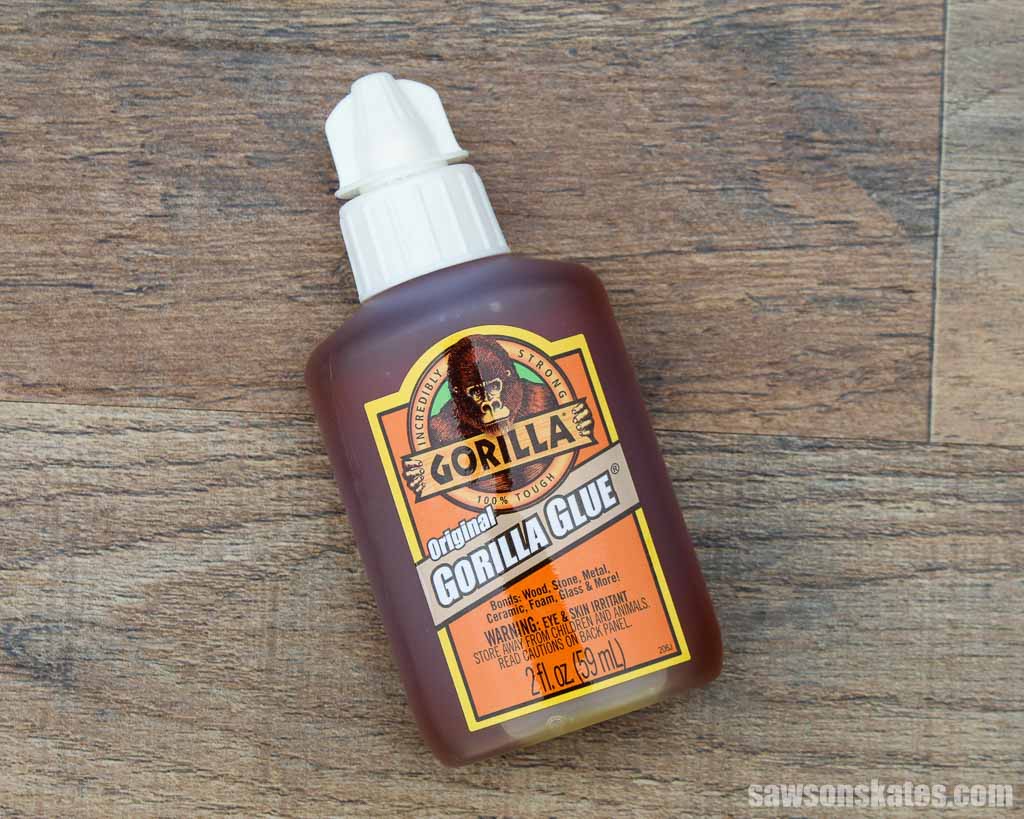
You may have heard of polyurethane glue, but what is it, and is it the right choice for your project? Polyurethane glue has several benefits but also has some drawbacks you should consider before using it. In this article, I’ll break down what it is, its pros and cons, common uses, how to use it, and alternatives. Let’s get started!
This tutorial contains affiliate links to supplies and tools. Purchases made using these links help support the Saws on Skates website and allows me to share more projects and tips with you. There is no cost to you for using these links. Visit my site policies for more information.
Table of Contents
- What is Polyurethane Glue?
- What is Polyurethane Glue Used For?
- Polyurethane Glue Pros and Cons
- Alternatives to Polyurethane Adhesives
- How to Use Polyurethane Glue
- How Do You Clean Up Polyurethane Glue?
- Frequently Asked Questions
What is Polyurethane Glue?
Polyurethane glue, also called PU adhesive, is a synthetic plastic resin made from polymers used to bond two surfaces together. It’s sometimes called Gorilla Glue because the Gorilla Glue Company was the first to bring polyurethane glue to market in the United States. Other popular brands include Titebond Polyurethane Glue.
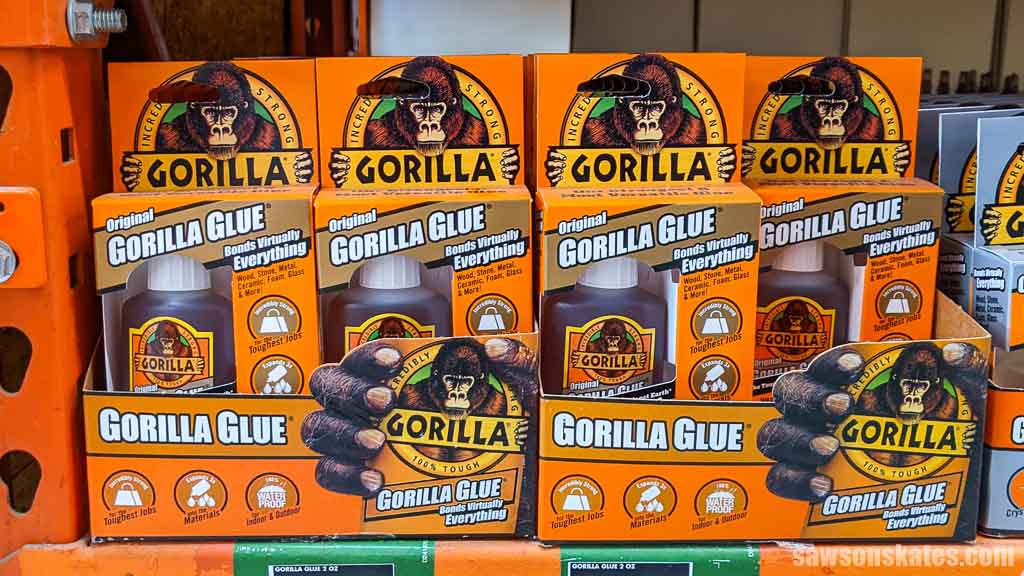
Polyurethane glue has several properties that make it unique compared to other adhesives. First, it requires moisture to cure. I usually apply the glue to one surface and dampen the other surface with water using a wet cloth or lightly misting it with a spray bottle.
Second, polyurethane adhesive expands as it cures. Have you ever used expanding foam insulation? It’s a similar concept. The glue starts in a liquid state, but it expands and hardens as it reacts with moisture.
This expansion can be an advantage and a disadvantage. If you’re gluing two pieces of wood together, the expanding nature of PU adhesives can help fill small gaps between the pieces.
But the drawback is the force of the glue as it expands can push the pieces apart. So it’s important to clamp the pieces together tightly while the glue dries.
Polyurethane glue has other drawbacks you should be aware of before using it:
- It’s messier than other glues, and it can be difficult to remove from your hands.
- Most polyurethane adhesives only have about 15 minutes of working time, which means you need to work quickly to assemble your project once you’ve applied it.
- It has a short shelf life, so once you open a bottle, it’s best to use it up within a year.
- It’s more expensive than other adhesives.
Now that we’ve covered what polyurethane glue is, let’s look at some of its common uses.
What is Polyurethane Glue Used For?
Polyurethane glue is a multi-purpose adhesive that can bond porous and nonporous materials such as wood, metal, glass, ceramic, concrete, and stone. It can also join dissimilar materials, such as a porous surface, to a nonporous surface like wood to metal.
Porous and Non-Porous Materials
The difference between PVA glues such as wood glue (also known as yellow glue) is that polyurethane glue works on porous and nonporous surfaces, whereas PVA glues only work on porous surfaces.
Related: What is PVA Glue? (Types, Benefits & Uses)
Woodworking: End Grain and Butt Joints
Another advantage of polyurethane over wood glue is its ability to create a strong joint on end grain which is the area of the board where the pores are exposed. The pores are like straws that transport water from the tree’s roots to its branches.
End grain is notoriously difficult to bond because the pores absorb the wood glue drawing the adhesive away from the joint, making it difficult to create a strong connection.
Polyurethane glue creates a stronger joint on end grain because the adhesive expands and fills the pores, which creates a strong bond between the two pieces of wood. This makes polyurethane glue ideal for bonding butt joints. A butt joint connects the end of one workpiece to the long grain edge of another.
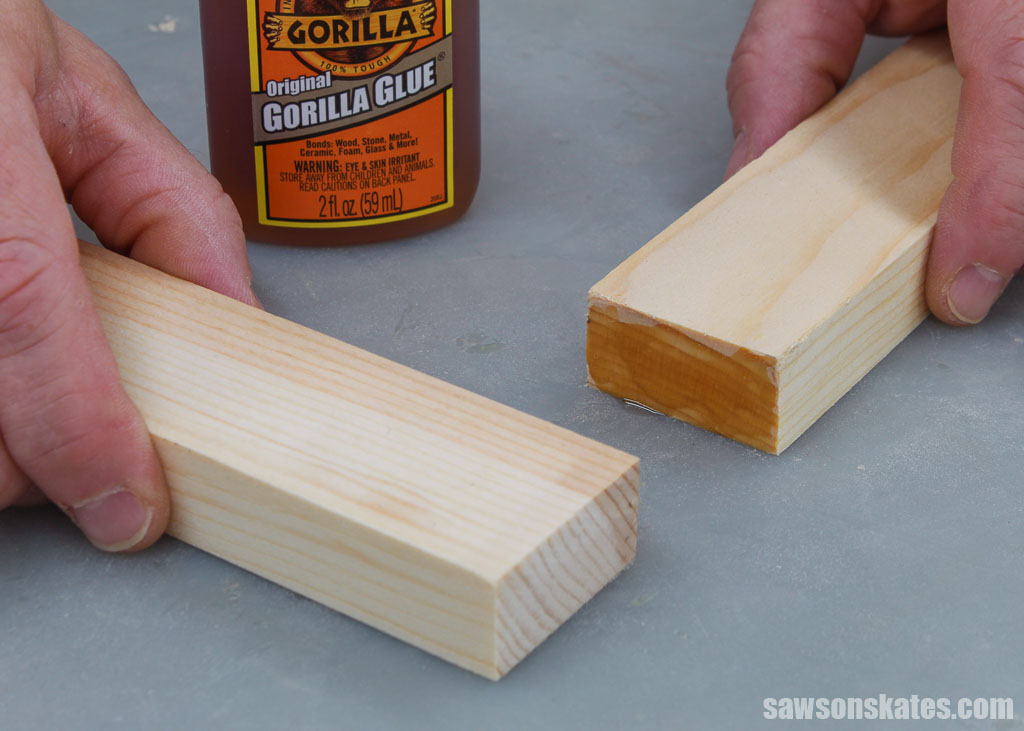
Waterproof
Polyurethane glue is waterproof, making it ideal for outdoor projects or for bonding materials that will be exposed to moisture.
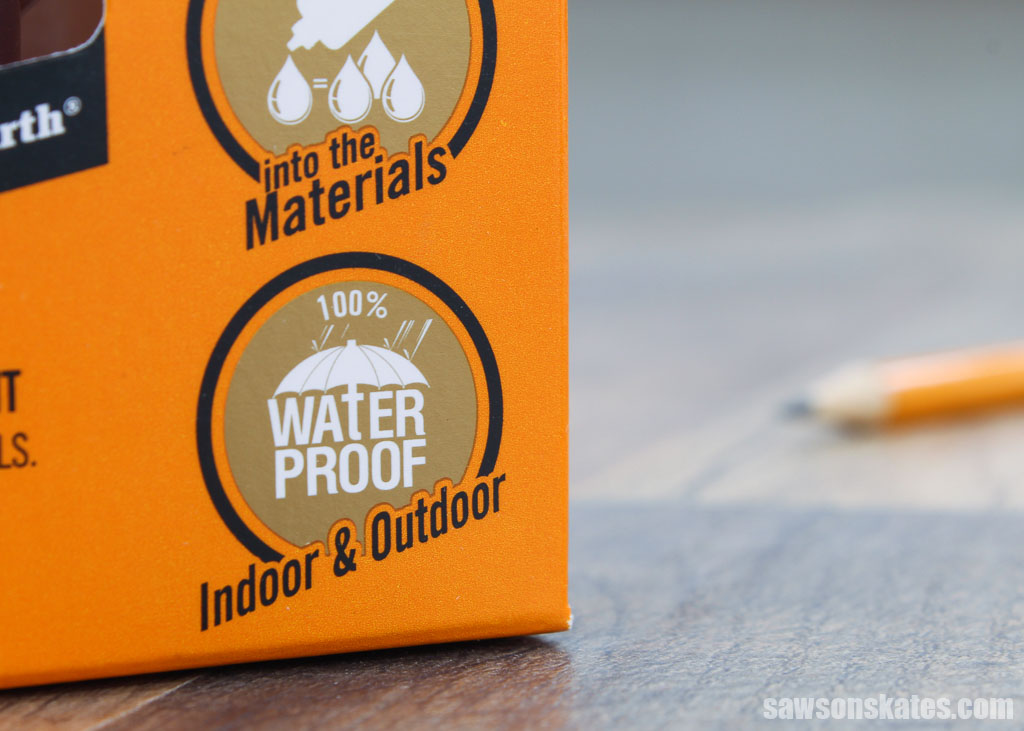
Fills Gaps
The expansion of polyurethane glue as it dries helps to fill small gaps between surfaces. However, the adhesive in those gaps contains air bubbles, so it doesn’t add much strength. If strength is important, you may want to choose another adhesive, such as epoxy.
Polyurethane Glue Pros and Cons
Pros
- Bonds wood, metal, glass, ceramic, concrete, and stone
- Waterproof
- Creates a strong bond on end grain joints
- Fills gaps between surfaces
Cons
- Messy to use
- Difficult to remove from hands
- Expansion can push pieces apart
- Short working time
- Short shelf life
- More expensive than other adhesives
Alternatives to Polyurethane Adhesives
While polyurethane glue has many advantages, it also has some drawbacks. Here are a few options to consider if you’re looking for an alternative to polyurethane glue.
Wood Glue
Wood glue is less expensive than polyurethane glue and is easier to use. However, wood glue won’t adhere to nonporous surfaces, and not all wood glues are waterproof.
Epoxy
Epoxy is more expensive than polyurethane, but it’s also stronger and can be used on both porous and nonporous surfaces.
Cyanoacrylate Adhesive
Cyanoacrylate adhesive, also called CA, is a type of instant glue that bonds porous and nonporous surfaces, and it has a shorter cure time than polyurethane glue.
Related: What is CA Glue? (Pros, Cons & Common Uses)
How to Use Polyurethane Glue
Polyurethane glue is pretty simple to use, but it’s always a good idea to try it on some test pieces before using it on your main project.
⚠️ IMPORTANT: Always follow the manufacturer’s instructions for your glue.
Step 1. Prepare the Surface
The first step is to prepare the surface, which must be clean and free of dust or residue.
For slick materials such as metal or glass, you’ll want to roughen up the surface with sandpaper to help the glue adhere better.
For oily woods such as cedar, you’ll want to clean the surface with acetone.
Related: Mineral Spirits vs Acetone (Differences + Which to Use)
If you’re using polyurethane glue on metal, you’ll need to clean the surface with a degreaser or acetone to remove any oil or dirt.
Step 2. Apply the Polyurethane Glue
Polyurethane glue can be difficult to remove from the skin, so it’s a good idea to wear a pair of disposable gloves.
Apply a thin, even layer of glue to one surface. You’ll only want to apply it to one surface to prevent excessive glue squeeze out. Squeeze out is the excess glue pushed out of the joint when pressure is applied.
💡 TIP: You can use painter’s tape on either side of the joint to help prevent squeeze out while the glue is drying.
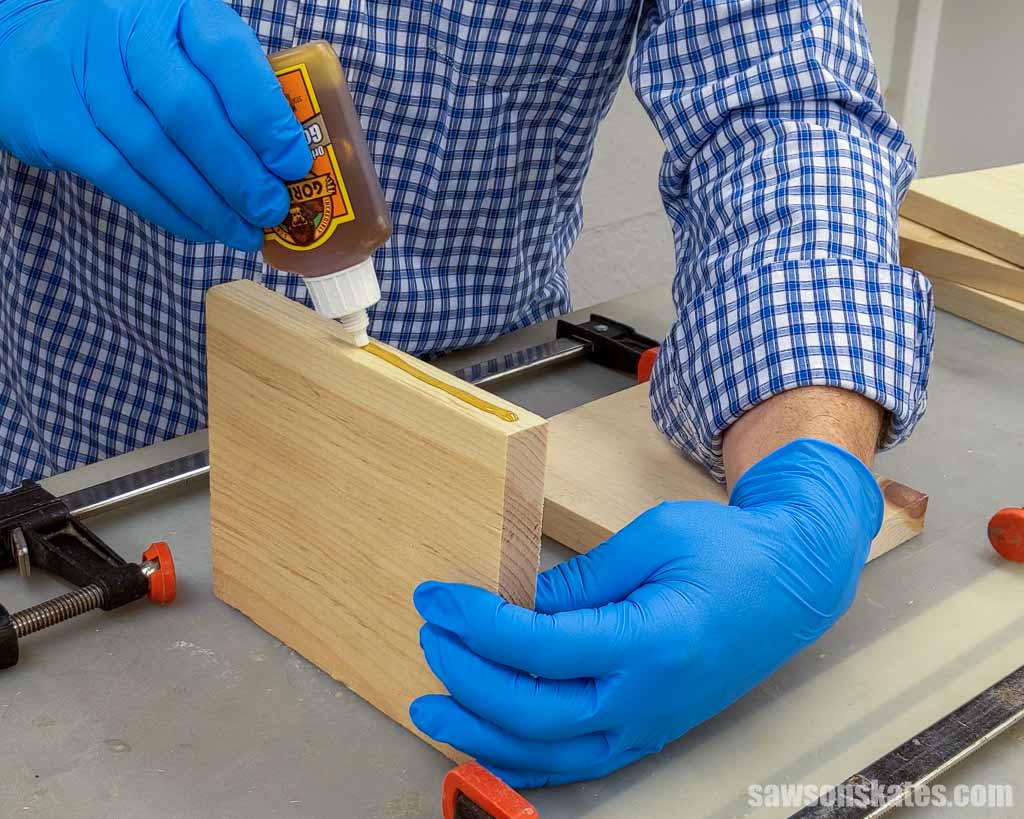
Dampen one surface with a bit of water. Water will help to activate the glue. You can use either a damp cloth or a spray bottle. Don’t flood the area with water. Just dampen it.
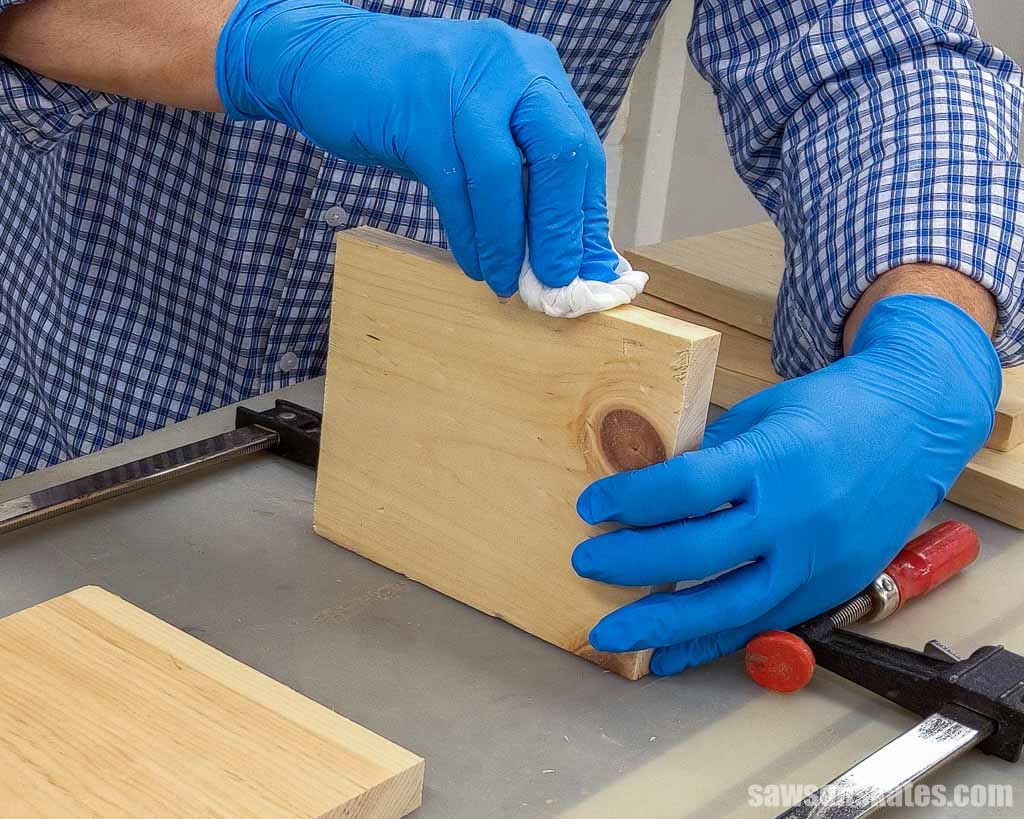
Step 3. Clamp the Pieces
Next, press the two surfaces together and clamp the pieces evenly and firmly.
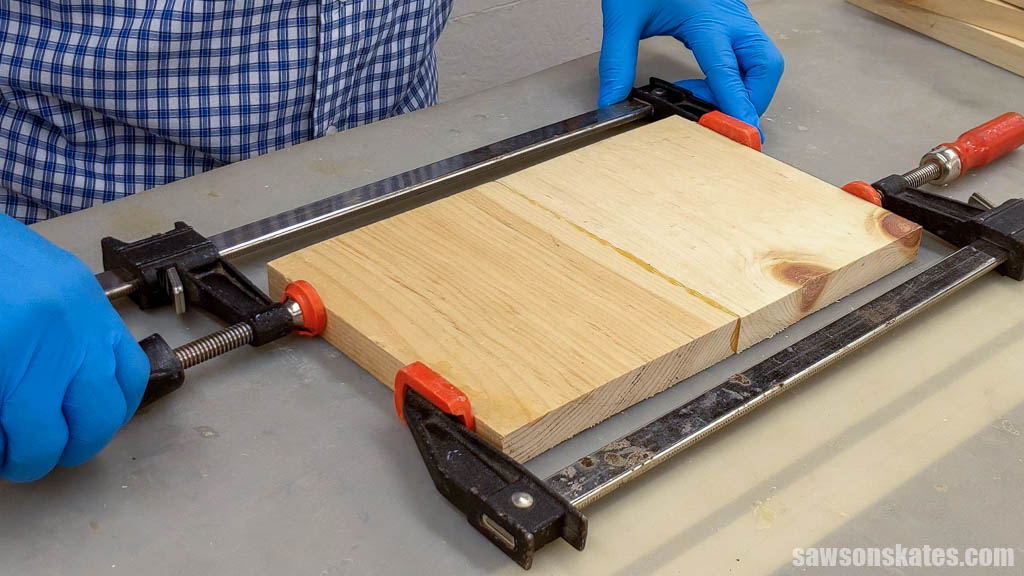
Clamping times can vary depending on the polyurethane glue you use, but generally range from 1 to 4 hours. Always check the manufacturer’s instructions for your particular glue.
💡 TIP: If you don’t have any clamps or the shape of your project makes it hard to clamp, you might be able to place a heavy object on top of the project or wrap it with duct tape to help hold the pieces together while the glue dries.
Step 4. Remove the Squeeze Out
Once the glue has dried, remove any squeeze out with a putty knife or scraper. Be careful not to gouge the wood or damage the surface of your project.
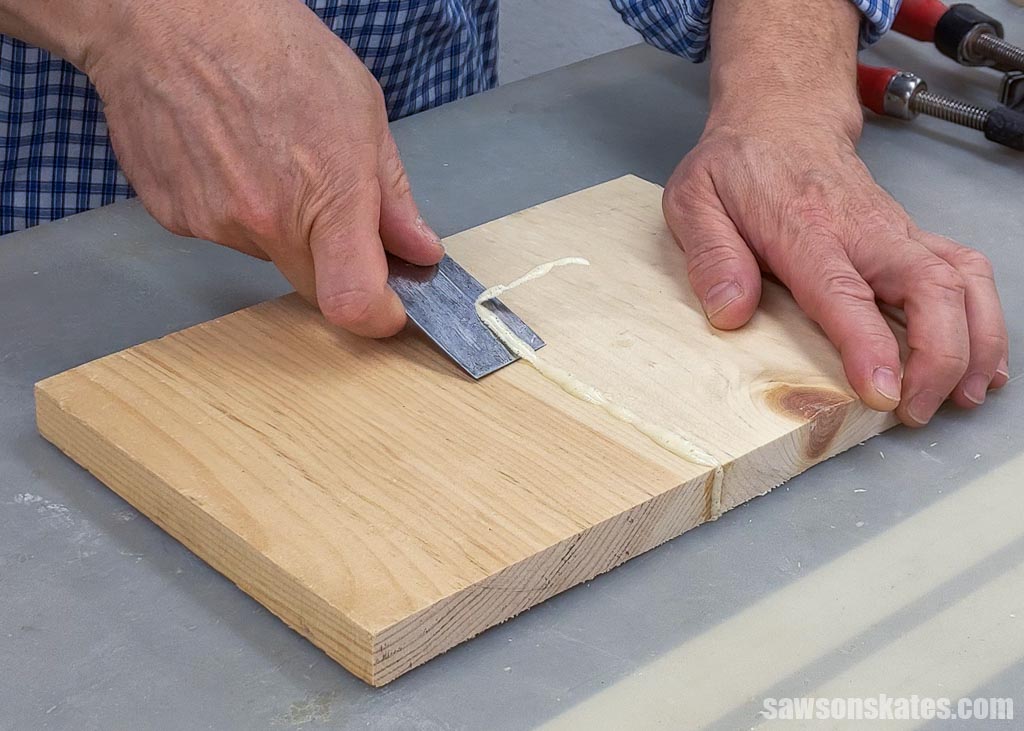
After removing the excess glue, you can sand the area smooth.
Related: 11 Secrets for Sanding Wood Projects Like a Pro
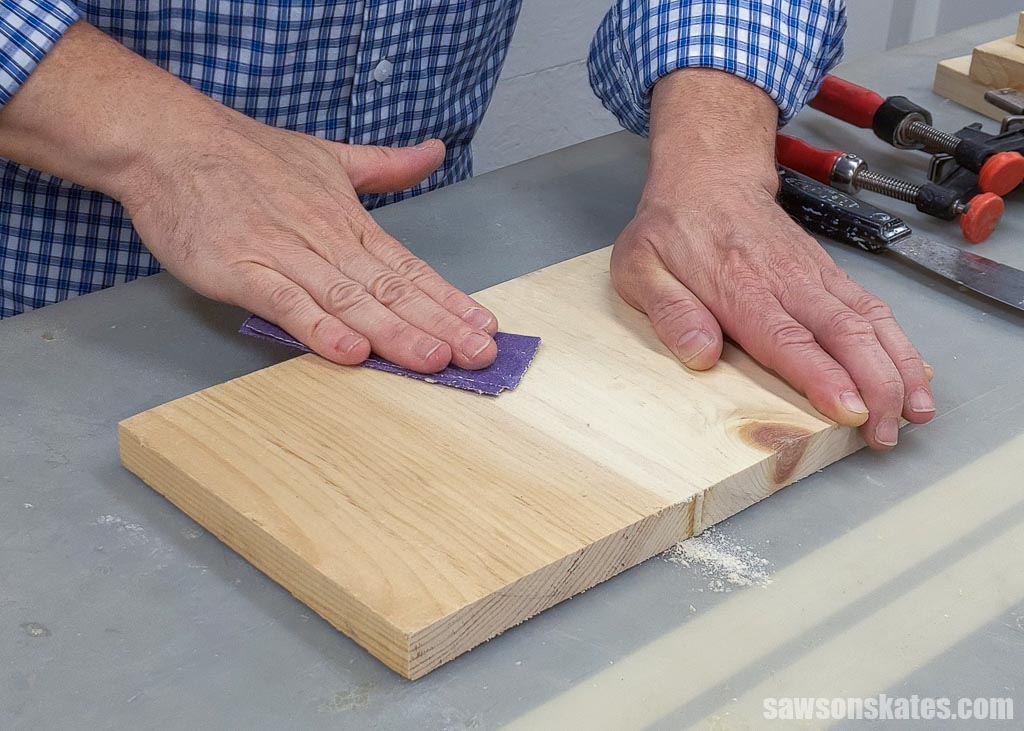
Step 5. Store the Polyurethane Glue
Now that you know how to use polyurethane glue, here are a few tips on how to store it.
First, remove any glue from the nozzle and cap with a clean, dry rag or paper towel. Then, immediately replace the cap after use to prevent moisture from entering the bottle. Remember, moisture activates the glue, so you don’t want any getting into the bottle.
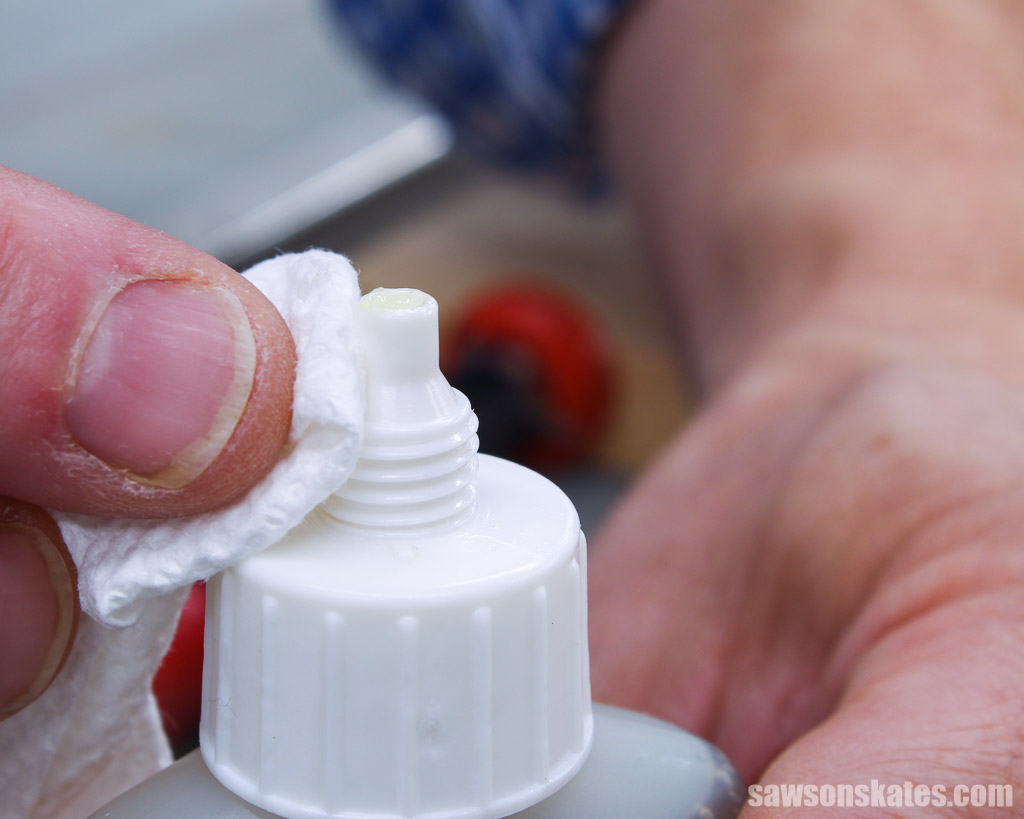
To extend the life of your glue, store the bottle upside down, which will help seal the nozzle and reduce the chance of moisture entering the bottle.
Finally, polyurethane glue has a shelf life of about one year. After that, it will start to harden and become unusable. So, if you have an old bottle of polyurethane glue that’s been sitting around for a while, it’s best to buy a new one.
How Do You Clean Up Polyurethane Glue?
Polyurethane glue can be difficult to remove from hands and surfaces, so it’s important to clean up any messes right away.
Polyurethane Glue on Skin
It’s a good idea to wear disposable gloves when working with polyurethane glue. If you do get it on your skin, I like to take the least aggressive approach first by trying to wipe it off with a clean rag or paper towel.
Next, try washing it off with soap and warm water. If that doesn’t work, you can try an exfoliating scrub with a gritty texture.
If all else fails, you can try using acetone or nail polish remover. Just apply a little to a clean rag and rub it on the affected area. These solvents are flammable, so use them in a well-ventilated area away from any heat source. They also dry the skin, so follow up with a moisturizer.
Polyurethane Glue on Surfaces
You can try removing squeeze out that is still tacky with a clean, dry rag or paint thinner. Paint thinner is flammable, so be sure to use it in a well-ventilated area away from open flames.
Related: Mineral Spirits vs Paint Thinner (Differences & Uses)
If the glue has dried, you can try sanding it off with sandpaper or using a putty knife, razor blade, or scraper to remove it. Just be careful not to damage the surface of your project.
Frequently Asked Questions
What is polyurethane glue used for?
Polyurethane glue is a strong, versatile adhesive that can bond various materials such as wood, metal, glass, plastics, and more.
What is the main problem with polyurethane glue?
The main problem with polyurethane glue is it requires water to activate, and it expands as it cures, which may push joints apart if they’re not clamped properly. It’s also messier than other glues, and it can be difficult to remove from your hands.
Is Gorilla wood glue a polyurethane glue?
The Gorilla Glue Company was the first to bring polyurethane glue to the US; however, they also offer wood glue that is not polyurethane based. Be sure to read the label. If it doesn’t say “original,” “expands,” or that it needs to be dampened with water, then it’s not polyurethane glue.
Final Thoughts
Polyurethane glue is a strong, waterproof, versatile adhesive that can bond porous and nonporous materials. It requires moisture to activate, and it expands as it cures.
The expanding properties can be an advantage because it fills gaps. However, it can also be a disadvantage because it can cause joints to push apart if they’re not clamped properly.
It’s messier than other glues, and it can be difficult to remove from your hands and surfaces, but with some care and patience, you should be able to remove it.
Polyurethane glue is a good option if you need a strong, waterproof adhesive. Just be sure to follow the directions and clean up any messes right away.
Thank you for stopping by. If you enjoyed this tutorial, would you please take a moment and pin it to Pinterest? I’d really appreciate it!

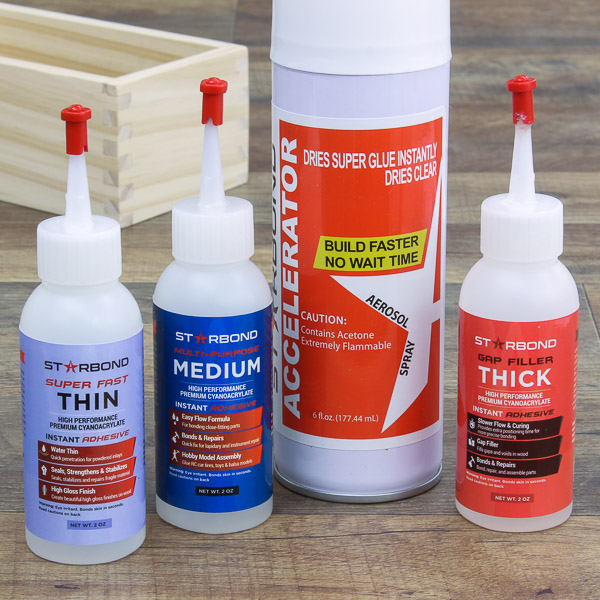
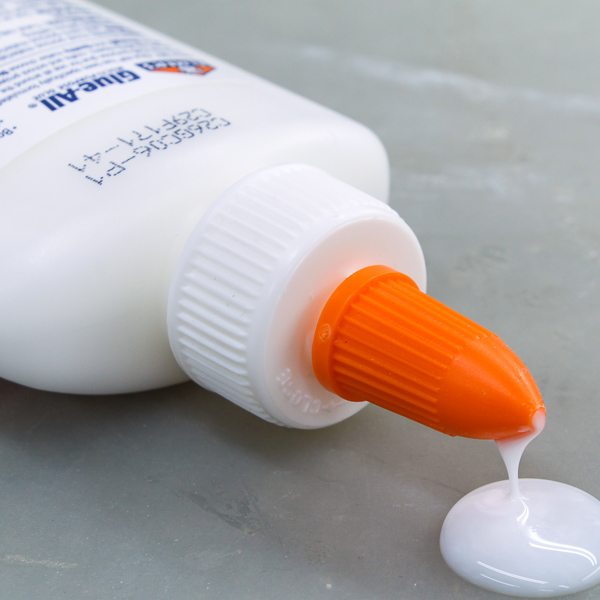
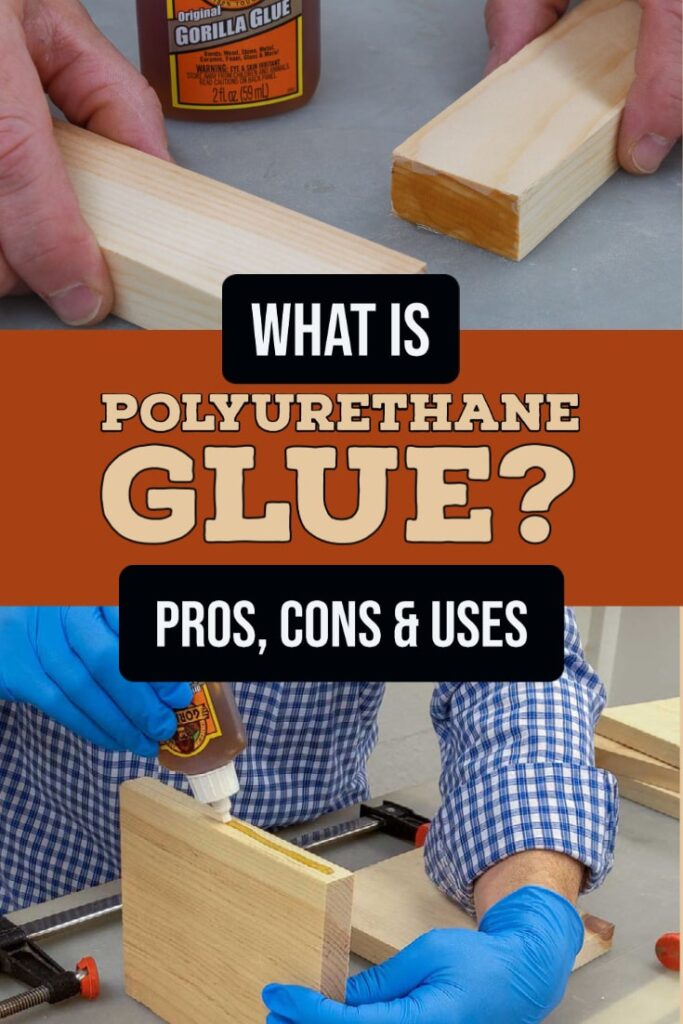
Great explanation. Thank you!
You’re welcome, Greg. I’m glad this was helpful.
My neighbor told me if you don’t mask off your work, polyurethane glue it will stain your wood permanently.
Really useful information, thank you!
You’re welcome, Nancy! I’m glad this was helpful.
So informative! Thank you for all your amazingly useful articles and lessons!!!
You’re welcome, Linda. Thank you for the compliments!